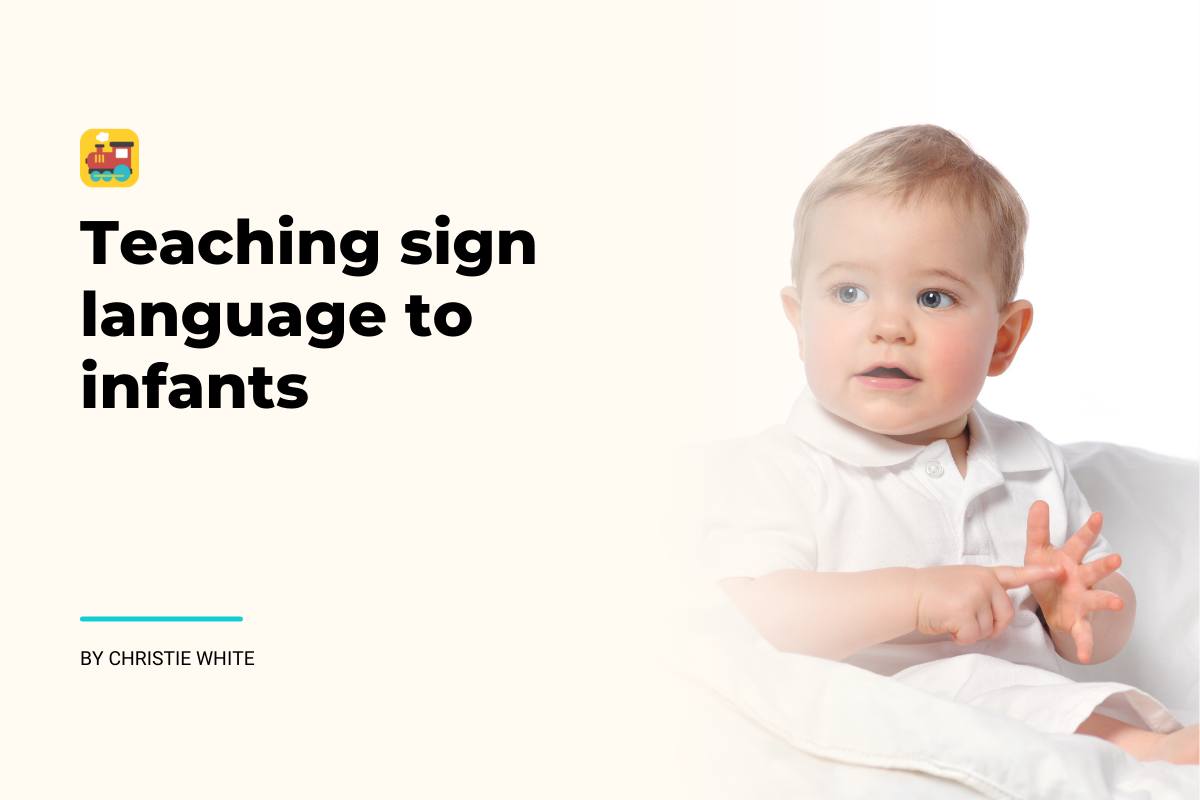As infants, children begin to understand sounds and symbols before they are able to form words and speak. They will often show this understanding through the use of gestures. They may reach to grab something they want, or raise their hands in the air when they are happy. When you see a child expressing themselves using hand gestures, this likely means that they are ready to understand sign language and you can begin teaching the basics to them.
Benefits of sign language for young children
Young children are interacting with the world around them though heightened senses. They are learning so many new things each day and always looking for new ways to express themselves. The more options they have to communicate and advocate for themselves the more they can grow and develop in their environment.
For infants, the ability to communicate with their caregivers before they can even speak is a huge progression. They are able to express when they want more of something (this is one of the signs that infants pick up on fastest!), as well as answer yes and no to questions by using signs instead of words.
Being able to have this level of communication with an infant before they are talking is nothing short of incredible
The more ways that children can advocate for themselves, the more they are able to be independent and learn in ways that work best for them. Learning sign language also prompts children to develop language and literacy skills earlier than expected and many sign language learners pick up on additional language cues earlier than children not exposed to sign language.
Download our FREE sign language alphabet template to easily begin teaching your children!

This is contrary to the rumors that learning sign language delays language development in children. Dr. Acredolo and Dr. Goodwyn wondered about this, too, so before the professors released their book, Baby Signs, they conducted a major study, sponsored by the National Institutes of Health. They found just the opposite to be true.
Babies who signed developed verbal language skills at a rate faster than average.
Other preliminary findings suggested children develop higher IQs as well, but this study is still underway.
Strategies for teaching sign language to children
You do not have to dedicate specific time for your children to learn sign language. The best way to teach it is to naturally incorporate it into your day and the words you are using.
Download our FREE sign language alphabet template to easily begin teaching your children!
Follow these tips:
- Every time you say a word that is associated with a sign you are teaching, make sure you do the sign for it.
- Ensure the child has their attention on you while you are signing to them.
- Make sure you are consistent. Every time you say the word, the sign accompanies it.
- Start with only a few signs at a time. Do not overwhelm children by teaching a large amount at once.
- Do the sign more than once. As much as possible, try to repeat the word you are teaching multiple times and do the sign that accompanies it each time.

Adilen Figueroa, who teaches a Sign, Say, and Play class in Hartford, Connecticut, suggests starting with mealtime signs since a child eats multiple times a day — and because most babies are fascinated by food as they begin to branch out into a variety of solids. You could start with the sign for “milk” or “water”.
Do not be discouraged if children do not pick up on a new sign right away. It tends to take weeks or even a month for them to catch on.
Teaching sign language to young children requires a lot of hard work and patience. However, it will pay off as soon as you see children picking up on it and being able to communicate in new ways. It benefits children massively as they continue to grow and develop.
Download our FREE sign language alphabet template to easily begin teaching your children!


